
- Areas:
Please choose
from the menue
"Panoramas"
Infos on Panoramas
By using a panorama on a website, the viewer will not be presented with just one view, but he can choose his view interactively. You can overcome the limited field of vision offered by conventional photography by placing the viewer in the center of a sphere. Viewing this spherical panorama, the viewer is immersed in a scene that surrounds him completely. The viewer will get a spatial impression of the scene and the viewing experience will be much more intense.
With panoramas you can:
|
We would like introduce to you the following aspects of panorama photography:
1. Widen the Field of View!
The human field of vision is 90° both to the left and to the right and 60° both up and down. Towards the margins of the field of vision we can only discern in black and white. With age, the field of vision is decreasing.
A camera with a focal length of 35mm will have a field of view of 27° both to the left and to the right and 19° both up and down in landscape format. In portrait format these values are swapped.
| Field of View | horizontal | vertical |
| Human | 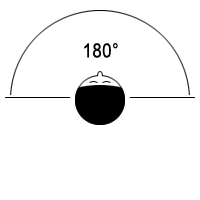 |
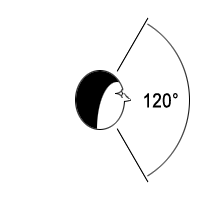 |
| 35 mm- Camera |
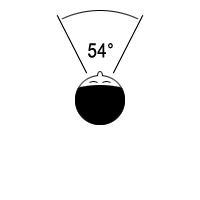 |
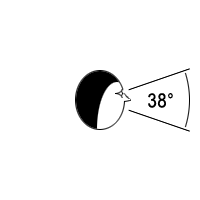 |
The above figure shows quite impressively, how cenventional photography narrows our field of view. That is why photographers tried to overcome this restriction. One possible solution is the wide lense. The most spectecular member of this family is the fisheye lens. This lens has a field of view of app. 180° in both the horizontal and vertical direction, thus covering half of the entire sphere. Since the field of view is mapped to a circle, the fisheye exhibits a very typical kind of distortion - you will search for straight lines in vain:
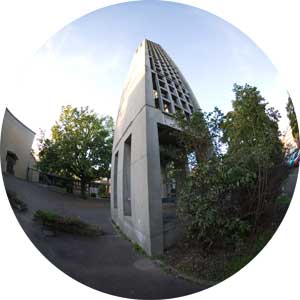
There is a very special "charm" to fisheye fotos. Yet the motive on such a picture is highly "distorted".
Another solution for oour problem is panorama photography, where many single pictures of limited field of view are stitched into one single panorama.
| Field of View | horizontal | vertical |
| Cylindrical Panorama |
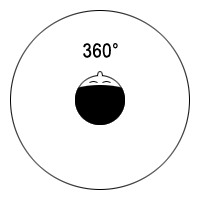 |
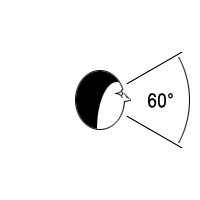 |
| Spherical Panorama |
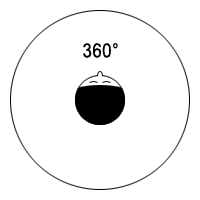 |
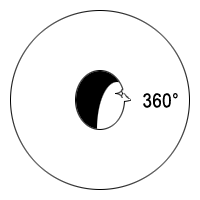 |
In the cylindrical panorama a sripe of both 30° up and stretches around the viewer. The spherical panorama is a sphere, that "coats" the viewer completely.
2. Cylinder or Sphere?
We offer cylindrical panoramas as well as spherecal panoramas. These two kinds differn in the vertical angle of view:
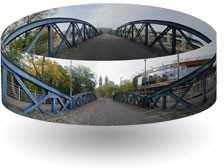 |
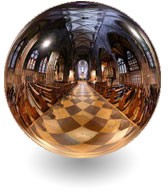 |
If there is no need for seeing the bottom and the floor indoors or the sky and the ground outdoors, or the panorama is neede for print media, a cylindrical panorama is sufficient. But you will miss out that "immersive" experience of the spherical panorama. Spherical panoramas are among the media with the strongest attractiveness on the web.
The above pictures are only examples - you can find the real panoramas
3. How does it work?
For panorama photography the camera is mounted on a special tripod. In the next step overlapping pictures are taken to cover the entire sphere around the point of view. These pictures are corrected for distortions, vignetting etc. The corrected pictures are imported into a panorama-program where they are stitched into a panorama. After the correction of stitching errors and the removal of "ghost pictures" from moving objects, the final panorama for the web is generated. When an indoor panorama is created, in additional step is needed to correct the highlights in the windows. This can been seen in our
4. What are the expenses?
The costs for a panorama (without travel expenses) range from € 180.- to € 410.-. The costs are calculated from the time needed to create the panorama. Since cylindrical panoramas are faster to create, these panoramas range in in lower price segment.
We do offer panoramas in a wide variety of file formats - Flash-Panoramas, Quicktime-Panoramas, Photoshop-Files in different projections, Previes and many more.
If you are interested in an own panorama or a precise quotation, please feel free to contact us:
|
F & R Internet Agentur, z. Hd. Dr. C. T. Rees, Zikadenweg 4 D-79110 Freiburg Tel.: 0761-1563461 View the Freiburg Panoramas. © f+r internetagentur |
